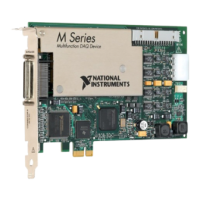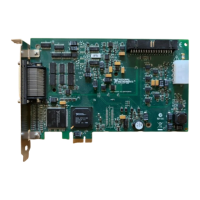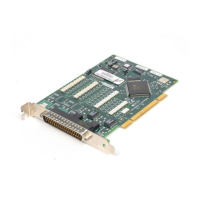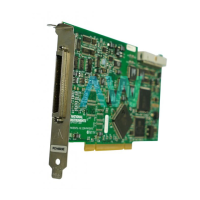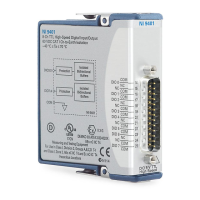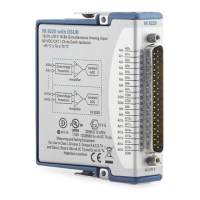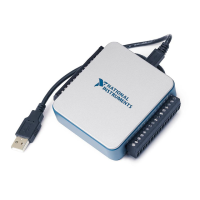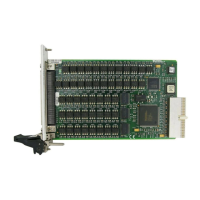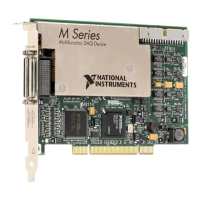
Do you have a question about the National Instruments PXI-6289 and is the answer not in the manual?
| Brand | National Instruments |
|---|---|
| Model | PXI-6289 |
| Category | I/O Systems |
| Language | English |
Essential safety precautions for operating M Series devices and modules.
Steps for installing software and hardware for M Series devices.
Recommended procedure for self-calibrating M Series devices for accuracy.
Basic information and best practices for using M Series USB devices.
Overview of DAQ hardware components and their functions in M Series devices.
Description of various cables and accessories for M Series DAQ devices.
Explanation of signal conditioning requirements for sensors and transducers.
Detailed descriptions of signals found on the I/O connectors of M Series devices.
Explanation of input ranges and their effect on M Series device resolution.
Details on differential, referenced single-ended, and non-referenced single-ended input modes.
Explanation of software-timed and hardware-timed acquisition methods.
Information on start, reference, and pause triggers for analog input.
How to set AO range and resolution using offset and reference selection.
Explanation of software-timed and hardware-timed analog output generation.
Using M Series DIO lines for static digital input or output.
Acquiring digital waveforms on Port 0 DIO lines.
Generating digital waveforms on Port 0 DIO lines.
Guidelines to avoid fault conditions for DIO and PFI signals.
Listing various counter input applications available on M Series devices.
How counters count edges on their Source input after being armed.
How counters measure the width of pulses on their Gate input signal.
Methods for measuring frequency using counters.
Performing position measurements with quadrature or two-pulse encoders.
Listing various counter output applications available on M Series devices.
Routing external timing signals to M Series functions using PFI terminals.
Guidelines to avoid fault conditions for DIO and PFI signals.
Overview of the clock routing circuitry of M Series devices.
Information on synchronizing multiple M Series devices.
Using RTSI for common clocks and shared trigger signals between devices.
Methods for moving data between host memory and acquisition circuits.
How data is transferred using USB Signal Stream and programmed I/O.
Generating triggers on digital signals using PFI, RTSI, or PXI_STAR.
Generating triggers on analog signals using APFI terminals or AI channels.
Different analog trigger modes: edge, hysteresis, and window.
Pinouts, specifications, and accessory choices for the NI 6220.
Pinouts, specifications, and accessory choices for the NI 6221 (68-pin).
Detailed pinout diagram for the PCI/PXI-6220 device.
Detailed pinout diagram for the PCI/PXI-6221 device.
Detailed timing information and diagrams for the analog input timing engine.
Detailed timing information and diagrams for the analog output unit.
Timing delays and requirements for digital waveform acquisitions and generations.
Common questions and solutions for analog input issues like crosstalk.
Common questions and solutions for analog output issues like signal glitches.
Comparison of pinouts between M Series and E Series multifunction I/O families.
Information on finding and using NI-DAQmx example programs for M Series.
References to essential documentation for M Series devices and NI-DAQmx.

